C.S. Burrough's Blog, page 3
August 15, 2025
My review of Sleep It Off Lady, by Jean Rhys
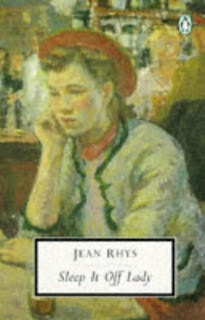
The late Jean Rhys remains my favourite writer ever and this selection of her work shines as only her words can. There was no one like her before, nor has there been anyone since. Her wry, brutally honest, self-deprecating voice is so beautifully tormented she's irresistible whatever your gender. She grabs you by the heart, chews you up and spits you out, somehow leaving you begging for more.
The heart wrenching title story sums up the book brilliantly, an excellent tale to choose. As with most of Rhys' work, a common thread in this collection is the theme of the displaced woman, the foreigner, the outsider, the stranger to this strange world of ours. We so readily take her into our hearts, understand and empathise completely. Her issues are ones most people have had at some time or other, but few have conveyed so succinctly.
These are the short works of an underrated enigma, in my opinion, who took my breath away from the first word of the first page of the first book I read of hers. This was the last of her fiction that I read, completing her life works. Unsurprisingly, she maintained her hypnotic hold over me to the last word. That was when I decided to start over and read her from scratch, every word, line, every book that she ever had published.
If you get one fleeting chance in a lifetime to read this cult status legend, you'd be nuts to consider letting it pass.
My review of Home To Roost and Other Peckings, by Deborah Mitford
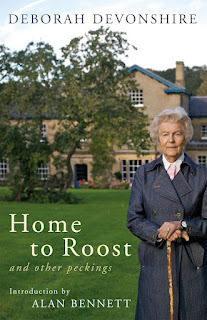
This not being the first Deborah Devonshire née Mitford book I had read (I loved Wait for Me! too), I knew I would like it. Because, despite her humility and self-deprecating humour, this youngest Mitford sister, having reached the highest rank of them all, was of fine intellect and simple charm.
She was always quick to point out how eldest sister and arch-tease Nancy Mitford joked of Deborah never exceeding the sophistication of a nine-year-old (even nicknaming her '9'). This was about Deborah's young spirit and unaffectedness. Famously well adjusted, she treated everyone the same, from royalty to pop star to servant.
Yet being a Mitford, Deborah was hardly conventional and drew from an extraordinary life in her many books. She grew up inventing the secret language 'Honnish' with next older sister Jessica Mitford, stowed away in an airing cupboard they called the 'Hons Cupboard', hidden away from adults in their father's drafty old Oxfordshire mansion inherited by her father, the 2nd Baron Redesdale.
Mostly home educated by governesses, from age 6 Deborah had a passion for chickens which stayed with her for life, becoming, amongst endless other things, a connoisseur of fine poultry, hence this book's title. She was also a keen horse rider and a talented ice skater, reaching professional levels but not taking it up due to lack of parental approval.
After her presentation at court as a debutante, Deborah fell in love with and was betrothed to Lord Andrew Cavendish, second son of the 10th Duke of Devonshire. They married in 1941. By the end of the WWII Deborah had lost two babies, her only brother Tom, four best friends and two brothers-in-law. She still had her famous big sisters though: the Fascist, the Communist, the Nazi, the novelist (and stud farmer Pam).
Her husband Andrew now became heir to his father's Dukedom. In her years as Duchess of Devonshire she discovered a necessary talent for stately home restoration, learning on the job with her magnificent 16th-century mansion Chatsworth House, which her husband the duke inherited with a tax bill of nearly $20 million in the post-WWII years. Their only way of keeping Chatsworth was to restore and open it up to the public to pay for itself.
They sold artworks, land and iconic historic buildings like Hardwick Hall to pay taxes of 80 percent of the estate’s value: around $300 million in today’s money. Deborah's transformation turned it into a self-sustaining family business.
They managed to retain Bolton Abbey estate in Yorkshire and the Lismore Castle estate in Ireland, both having been in the Cavendish family for centuries, Lismore Castle once home to Fred Astaire's sister Adele, wife of Lord Charles Cavendish (Deborah's great uncle-in-law).
As Châtelaine, Deborah entertained world leaders at Chatsworth, her husband serving as Parliamentary Under-Secretary of State for Commonwealth Relations from 1960 to 1962, Minister of State at the Commonwealth Relations Office from 1962 to 1963, and for Colonial Affairs from 1963 to 1964.
She received JFK and brother Bobby, to whom she was related by their sister Kathleen's marriage to Deborah's brother-in-law William (Kathleen and William died tragically young, with Kathleen buried with many Dukes of Devonshire in St Peter's Church, Edensor on the Devonshire family estate). Indeed, she was JFK's personal guest at his 1961 presidential inauguration and, more sadly, an attendee his 1963 memorial service.
In the late 1950s and '60s it was not unheard of for the Queen Mother to invite Deborah to some event or other. Queen Elizabeth II herself had tea at Chatsworth. The then dazzling Princess Margaret's Chatsworth visits attracted other VIPs, movie stars such as Gary Cooper, literati figures like Evelyn Waugh (really an old friend of sisters Nancy and Diana), between which Deborah hobnobbed with the world's jet set, oversaw 35,000 acres of gardening, tended her famous hens and generally got her hands dirty.
She wrote fascinating books, many about Chatsworth and her work there (she was even known to man the ticket office herself). Her Chatsworth books include Chatsworth: The House (1980), Farm Animals: Based on the Farmyard at Chatsworth (1991), Treasures of Chatsworth: A Private View (1991), Chatsworth Garden (1999) and Round About Chatsworth (2005).
Yet she remained the down-to-earth country girl who adored her many animals, kept on speaking terms with all her Mitford sisters even when the others were at loggerheads. Deborah never got into those Mitford feuds and fallouts. 'Their politics were nothing to do with me,' she said.
She was perhaps the happiest and most grounded Mitford sister, despite her marked social elevation that set her somehow apart from her older siblings, having enjoyed a comparatively untroubled childhood then a stable lifelong marriage.
Though minus that glaring Mitford rebellious streak, Deborah shared their sharp minds, penmanship skills, droll humour and regal 'Mitfordese' drawl ('Do admit!' 'Do tell!' 'Please picture!'). It was Deborah herself who as a girl started 'Do admit'.
Yet simplistic in so many ways. Lucian Freud, who painted her several times, was a close friend. 'I see him when I go to London and I leave him eggs on the doorstep,' she said in an interview. 'He seems to like that. I really love him and I always have.'
Her candid patter of In Tearing Haste: Letters Between Deborah Devonshire and Patrick Leigh Fermor shows her capacity to chew the fat with a famous polyglot as if over beer and peanuts.
Just as her dotty banter in The Mitfords: Letters Between Six Sisters betrays an endearing almost vagueness, yet a deep personal loyalty. She is clearly the 'nice' one, with whom one would feel safest at a state banquet, country pig fair or couture salon hop.
She was an ardent Elvis Presley fan. Interviewed in The Daily Telegraph, in 2007, she recounted having tea with Hitler on a visit to Munich in 1937 with her mother and sister Unity, the latter being the only one of the three who spoke German and therefore carrying on the entire conversation with Hitler. The Telegraph interviewer asked who Deborah would have preferred tea with: Elvis or Hitler. With astonishment she answered: 'Well, Elvis of course! What an extraordinary question.'
Being the youngest Mitford, Deborah outlived the others and indeed her husband the duke, becoming Dowager Duchess of Devonshire in 2004, having been appointed a Dame Commander of the Royal Victorian Order (DCVO) by Queen Elizabeth II for her service to the Royal Collection Trust.
She died aged 94 in 2014, survived by three of seven children, eight grandchildren (including fashion model Stella Tennant, whose Vogue Chatsworth shoot Deborah writes of in this book) and eighteen great-grandchildren. Her funeral at St Peter's Church, Edensor, was attended by family, friends, six hundred staff, the (then) Prince of Wales and Duchess of Cornwall.
Her anecdotes and ponderings in this slim volume are a heartwarming treat, written as if she's perched on the end of your bed, an old, old Dowager Duchess, telling you a few wise tales. 'When you are very old,' she once said, 'you accept what has happened. You cry over some things, but not a lot. It's too distant.'
Pure pleasure.
My review of Les Misérables, by Victor Hugo
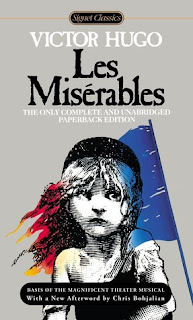
It gets no better than Victor Hugo's 1862 epic, considered one of the 19th century's greatest novels.
The masterpiece is a breathtaking reminder of the limitless extremes of human cruelty and generosity, as true for today's world as it was for Hugo's. The reader is seduced into caring deeply about the plights of these wondrous, intensely drawn characters.
Set between 1815 and the June 1832 Paris Rebellion, it follows various parallel lives, focusing on ex-convict Jean Valjean and his life of redemption. Although a force for good in the world, he cannot escape his criminal past. Reinventing himself as Monsieur Madeleine, he becomes a wealthy factory builder, parochially renowned for his benevolence and is, by popular demand, appointed Mayor.
Valjean, we wish was somewhere round our own corner, a man whose impossible decency we immediately warm and aspire to. His great adversary, fanatical police inspector Javert, is on an obsessive, unending crusade to recapture Valjean. Someone we wish dreadful events upon, Javert eventually meets an unsavoury end we'd perhaps prefer more terrible.
Haunting characters are tragedienne factory worker Fantine, whose fostered-out daughter, Cosette, Valjean rescues from cruel innkeepers Monsieur and Madame Thénardier. Raising Cosette as his own daughter, Valjean keeps his convict past as much a secret from her as from everyone else. Meanwhile, the Thénardiers' elder daughter, Éponine, a parentally pampered and spoiled child, ends up a street urchin, falling for revolutionary Marius. The latter, however, has eyes only for the now privileged Cosette, adopted daughter of Mayer Valjean, alias Monsieur Madeleine.
Not just these main characters, but the thousands of extras vividly crowding Hugo's rich, textured backdrop, earn our heartfelt concerns and goodwill. We know precisely why thieves thieve, why rebels rebel, why gendarmes, jailers and bureaucrats are to be avoided at all costs. We are, indeed, revolutionaries ourselves as we take this journey alongside them, all the way to the torch-lit, gun smoke-shrouded barricades.
Themes and topics include historical Paris, politics, moral philosophy, antimonarchism, justice, religion, and variations of romantic and familial love.
Comprising five volumes and approximately 1,500 pages in unabridged English language editions, this is one of the longest novels ever written. Not one to be rushed, savour every line and take as many months as you need. The resulting immeasurable satisfaction is a priceless treasure.
My Review of Elizabeth of York: A Tudor Queen and Her World, by Alison Weir
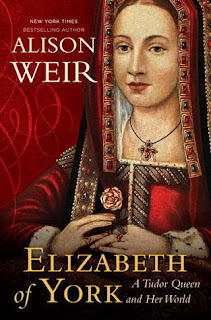
We hear relatively little from historians about this fascinating queen consort, whose blood claim to England’s throne was far greater than that of her husband, King Henry VII, the first Tudor monarch with whom she founded the famous dynasty. Her emblematic White Rose of York, paired with Henry’s Red Rose of Lancaster, formed the Tudor Rose, that great diplomatic solution to the Wars of the Roses which remains England’s official floral emblem.
Born in Westminster Palace, the oldest child of King Edward IV, it was because of her gender that Elizabeth was never considered for rulership in her own right. This biological ‘handicap’ would be rethought for her granddaughter and namesake, Queen Elizabeth I, the last Tudor monarch, for the politics of post-reformation religion. In Elizabeth of York’s youth there were too many male claimants, virulently competing, for women to be considered. Towards the culmination of the protracted ‘Cousin’s War’ it was every man for himself, and every woman put forward by her male guardian for politically advantageous marriage stakes.
Alison Weir has always been one of my favourite historical non-fiction authors. Here she again treads where others have not, using her characteristic inventorial detail and commonsensical personal reasoning to draw a literary portrait of an erstwhile somewhat two-dimensional figure. Traditionally drawn as a somewhat stiff, obedient character not unlike her future daughter-in-law Jane Seymour, Elizabeth had other sides explored at length in this entrancing biography. She was no dark horse, no villainess, but no bland Pollyanna either.
She was the older sister of the ‘princes in the tower’ who mysteriously vanished leaving room for their Regent-uncle Gloucester to become King Richard III. Once widowed, King Richard even considered marrying this niece, to strengthen his shaky claim to the throne. The incestuous notion, however, triggered mass repulsion, further weakening, rather than strengthen, his profile, already in damage control after so cunningly and callously usurping his uncrowned juvenile nephew. Elizabeth, not only having expressed no objection to the proposed match, was even put out when he decided against marrying her (astonishing, considering that, to justify his own coup, Richard had earlier declared Elizabeth's parents' marriage invalid, deeming Elizabeth and her siblings illegitimate and ineligible for the throne).
But such was Elizabeth's cool determination to claim her due place on the throne of an England offering princesses few independent choices. Regardless of whether as ruler or consort, she believed herself destined to sit there, as did the English people, who would in time come to revere her.
Almost married off to first George Neville, nephew of the 16th Earl of Warwick (‘The Kingmaker’), then to Louis XI of France’s son, the Dauphin Charles, her destiny had been uncertain for much of her early life. Eventually a mother of seven, she was reputedly pious, benevolent, dutiful yet quietly resilient, having endured much adversity during her mother’s early widowhood, when they lived in the sanctuary of Westminster Abbey after King Edward IV’s death at aged forty from an acute and unspecified illness.
The daughter of the legendary ‘White Queen’, Elizabeth Woodville, Elizabeth of York was thought beautiful, inheriting her father’s good looks but most notably he mother’s fair complexion and distinctive red-gold hair, passed down to her infamous son, King Henry VIII, and grandchildren King Edward VI and Queen Elizabeth I (their elder sister, Queen ‘Bloody’ Mary I, had auburn hair, darkened perhaps by her Spanish mother’s genes).
According to folklore, Elizabeth of York is the ‘queen ... in the parlour’ in the nursery rhyme ‘Sing a Song of Sixpence’; her husband, the famously parsimonious King Henry VII, being the ‘king ... counting out his money’. Her marriage, forged by dynastic necessity, became a rare true love match.
She died in the Tower of London, then still a royal residence, on her 37th birthday, following a postpartum infection from giving birth to Princess Katherine who lived for only eight days. Henry VII was so grief stricken he became ill, disallowing all but his mother Margaret Beaufort into his presence. His intense grief lasted for years, his reputation for miserliness and paranoia becoming markedly worse. The Tower of London was thereafter abandoned as a royal residence.
Afforded a more lavish funeral than even her father, Edward IV, Elizabeth lay in state at the Tower and was interred at Westminster Abbey's magnificent Henry VII Lady Chapel commissioned by her husband. She and Henry still lay there together, their graves topped with an elaborate bronze effigy.
The last Plantagenet to wear any royal crown (her uncle Richard being the last to reign), Elizabeth of York was titular predecessor and mother-in-law of Katherine of Aragon. She was a great-grandmother of ‘Nine Days Queen’ Lady Jane Grey and a grandmother, great-grandmother and great-great-grandmother to Scottish monarchs James V, Mary Queen of Scots and James VI and I of Scotland and England. An ancestor of today’s British royals, she is an important genealogical link of continuum between Norman rulers, from whom the Plantagenets sprang, and Queen Elizabeth II.
While this is not my clear favourite Weir biography, neither is its subject the most exciting historical royal. Just because their most glittering subjects are already covered does not mean any great writer such as this should cease working. Like the great Lady Antonia Fraser, Alison Weir displays uncommon bravery by taking on certain of history’s less widely popular figures, having already claimed her place as one of this genre’s contemporary giants. This was, overall, another truly absorbing, entertaining and enlightening addition to my ‘Read’ list. I closed the last page having come to know personally a great lady who should have been queen in her own right and today would have been.
My review of Lady Jane Grey, by Hester W. Chapman
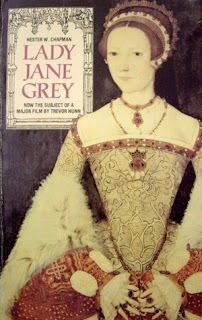
I have read widely for decades, tomes old and new, on Tudor royals and courtiers. Here was a girl forever pushed to the back of my reading cue. I, like many, knew Lady Jane Grey as 'that' girl who only reigned for nine days. That she was executed under Queen ['Bloody'] Mary I whose ministers charged Jane with treason for usurping Mary. The knowledge I lacked involved the circumstantial details. Who was driving such a plot besides Jane's ambitious parents? Why? And to what extent Jane herself was a willing or unwilling participant.
Here is all of that explained plus more. We explore Jane's regal family background, her right royal education as an heir to Henry III's throne and her differing relationships with each of her three cousins, the main contenders for Henry's throne, who for much of Jane's life were ahead of her in the succession.
The succession became reordered along the way. By the premature demise of Henry's sickly primary heir, young King Edward VI, Jane's place had been manoeuvred, without her consultation, to the front.
This, most know, was a religio-political move steered by powerbrokers fervent to keep the crown from Catholic Mary and 'bastard' Elizabeth.
What many are often left wondering is: why did the famously reluctant Jane go along with this at all? And why, when her famously forgiving cousin Queen Mary, after only nine days, successfully took back her rightful place from the 'usurping' Jane, did Jane end up with her head on the execution block? I had hitherto felt to have been offered a varying range of partly subjective explanations by historians seemingly wanting to gloss over it all in their quest to discuss greater icons.
Like many of this period's complex, intertwined scenarios, this has a cast of thousands. That includes the religiously polarised English citizenry, Jane's dynastically ambitious family and the troublesome in-laws attached to her arranged marriage which could have been avoided. Not forgetting the wily foreign officials representing Queen Mary's husband-to-be, Philip of Spain. Queen Mary herself, it seems, had her hands tied and was not necessarily the all-vengeful monster history has passed down to us.
This is a meaty read for those seasoned in the main facts of Tudor England and wanting to fill in the classic gaps. Eruditely composed and researched, it escapes the trap of becoming too academically dry. Such are the makings of a high calibre, yet popular, historical biography.
A well detailed, entertaining and informative accomplishment. I was all the better for having read it.
July 5, 2025
My review of My Hard Heart: Selected Fiction, by Helen Garner
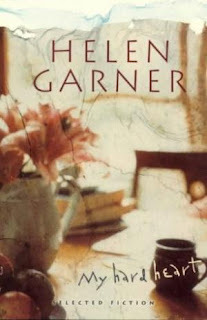
I loved Helen Garner's style from the time I read with awe her Monkey Grip (1977) and, until now, never got around to exploring much else of hers - that's no excuse, of course, but life and other reading just gets in the way sometimes. But I vividly remember wishing I could do what she did at that time. Such a bar raiser and role model this talented soul must have been for so many emerging wordsmith hopefuls over the decades.
Anthologies are popular reintroductions to writers, and follow-ups, after reading their novels. In the latter category, I read with intrigue in my ongoing quest to seek out seasoned Aussie writers who grab me. I enjoyed Garner's acute observations of human nature. I relished her evocative backgrounding. Her voice is richly authentic. Her fragmented sense of form I found bravely effective. Her suburban characters endeared and revolted me as much as they seemingly do their author, amounting to fine depictions.
Although hard going in parts, the anthology's looming sense of inertia typifies a suburban Australian mindset of not long ago or even today, where intellect feels futile and family or mateship comes first. The combined greasy despondency and simmering tetchiness across the stories captures something as fundamentally Australian as its weather, if you can muster the grit to sit through it. This seems to be Garner's intended effect and, as always with this author, she nails it magnificently.
So, in some ways these pieces struck me as cathartic exercises, a soul-baring foundation of much great modern literature.
I was compelled to keep reading, with the timelessness of her human dilemmas loud and clear throughout.
Helen Garner hardly needs my validation after her achievements. A notable Australian literary behemoth, one must admire her work's longevity in such a fast-changing scene. Whilst she has been criticised by some for merely 'transcribing her diary material into fictional form', in her defence it needs reiterating that autobiographical fiction is the chosen genre of some of the greatest writers of all time. Raw truth punches harder, for many including this reader, than even the most elaborately contrived story plotting, character arcs and formulism of much popular fiction.
My quest for home grown Aussie writers to embrace continues. Thank you, Helen Garner, for earning your place near the top of my list.
You are among our very best, always.
My review of The World According to Garp, by John Irving
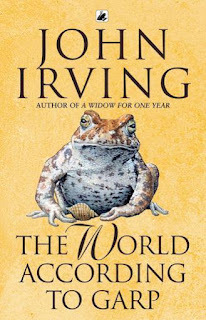
After rescuing this curled up thirty-plus-year-old paperback from a railway platform waiting room bin, The World According to Garp would not be re-dumped. Rehoused and adopted, it kept me up way too late into the night, for all the best reasons.
This funny, evocative, at times poignant tale by John Irving had me hooked from the outset. It's no wonder he went on to score a raft of awards, for print and screen. The narrative chronicles the life of T. S. Garp, whose strong-minded single mother, nurse Jenny, wanted a child but no husband.
After we see Garp through his comical formative years he grows up to become an author. His mother, Jenny, also writes on the sly, eventually gaining greater acclaim than Garp. Jenny's autobiography, A Sexual Suspect, makes her a feminist icon with a cult following known as the Ellen Jamesians, named after a small girl whose tongue was cut out by rapists. Jenny's bizarre cult members cut out their tongues in tribute to young Ellen Jamesian. His mother's infamy is a bone of contention to the less radical Garp who, maintaining filial loyalty, is inwardly torn.
John Irving's characters have a quirky realism that thrills and resonates authenticity. Even the most absurd situations are engaging and credible, worthy of bringing a wicked smile to anyone's face. Central themes include gender roles, sexuality and death.
The first paperback edition won America's National Book Award for Fiction in 1980. The 1982 film adaptation, starring Robin Williams in the title role, saw John Lithgow and Glenn Close respectively nominated for Best Actor in a Supporting Role and Best Actress in a Supporting Role, at the 55th Academy Awards.
Not my usual genre, I haven't read anything like it. Highly recommended for a lighthearted but good, solid read.
*Footnote - always check railway platform waiting room bins.
My review of Gone with the Wind, by Margaret Mitchell
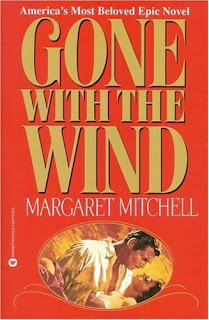
Margaret Mitchell received 38 publishing rejections before the lucky Macmillan publishers accepted Gone with the Wind. Her only novel published in her lifetime, it sold 30 million copies (with two sequels authorised by Mitchell's estate published more than a half century later). Mitchell won the 1937 Pulitzer Prize for Fiction for this epic of the highest order, of more than a thousand pages.
Set in the American Civil War and Reconstruction, this tracks the cunning antics of wealthy Southern plantation owner Gerald O'Hara's daughter, Scarlett, who must do what she must to survive sudden destitution.
There's a touch of the Scarlett O'Hara in the best of us. Tainted more with her father's forthright Irish blood than her gracious mother Ellen's French ancestry, she's strong-willed, self-centred, at times petulant, but ultimately practical and ever true to her own heart. This complexity makes her the great literary heroine she is and not simply a spoilt Southern princess who deserves a good slapping down. No wonder Hollywood interviewed 1400 actresses before settling on the extraordinary Vivien Leigh to capture her fabulous persona for the 1939 film, which won eight Academy Awards.
Written from the slaveholder's perspective, Gone with the Wind is Southern plantation historical fiction. Though often placed in the historical romance sub-genre, it arguably lacks all the romance genre elements and contains other elements not found in romance novels. It also fits the coming-of-age, or Bildungsroman structure, chronicling archetypal southern belle Scarlett from adolescence to adulthood.
Mitchell's working title had been the novel's last line, Tomorrow is Another Day. Also considered were Bugles Sang True, Not in Our Stars and Tote the Weary Load. A metaphor for the end of the South's way of life before the Civil War, the eventual title comes from Ernest Dowson's poem Non Sum Qualis Eram Bonae sub Regno Cynarae:
'I have forgot much, Cynara! gone with the wind,
Flung roses, roses riotously with the throng,
Dancing, to put thy pale, lost lilies out of mind...'
Scarlett uses the phrase when pondering whether her home-plantation, 'Tara', is still standing or if it is 'gone with the wind which had swept through Georgia'.
Pampered Scarlett survives an extreme reversal of fortune, rebuilding Tara cotton plantation and her own self-esteem, in the post-war South. Starkly contrasting with her gentler sister-in-law Melanie Hamilton's qualities of trustworthiness, selflessness and loyalty, Scarlett displays shrewd, manipulative, deceitful, even superficial traits, her first priority being money.
Similarly contrasting are Scarlett's two main men: her sensitive, gentlemanly, almost effeminate love interest, Ashley Wilkes (played onscreen perfection by Leslie Howard). He is Melanie's cousin who marries her as promised, devastating Scarlett who wants him for herself. Too passive and earnestly principled for Scarlett, he is perfectly matched with the softer, altruistic Melanie. A planter by inheritance, Ashley represents Confederate defeat, foreseeing and too readily accepting that cause's end after the Civil War. His very name signifies blandness, invoking the colourless vision of ash. His limpid gesture at 'real men's' activities is purely tokenistic. His entire family, according to Scarlett's father, was 'born queer'. Yet Ashley is 'the Perfect Knight' in Scarlett's mind, even throughout her three marriages.
Scarlett first begrudgingly marries the shy and loving Charles Hamilton. Soon after, he dies of pneumonia, never reaching any battlefield or even seeing their son, Wade. She then callously steals her sister Suellen's fiancé, Frank Kennedy, an older, unattractive man whose money Scarlett has in mind to pay Tara plantation's taxes. This middle husband is a remote figure, never understanding Scarlett's ruthless business tenacity. After not so long he is shot through the head attempting to defend Scarlett's honour after she is attacked. He leaves Scarlett with a daughter, the homely, simple Ella Lorena.
But then comes Scarlett's third husband and other main man, the hard-drinking 'black beast' Rhett Butler (personified on celluloid by Clarke Gable). When not idling away his hours wheeling and dealing, gambling or dallying with prostitutes in Belle Watling's brothel, dandyish Rhett shows Scarlett his 'large brown hands', growls 'I could tear you to pieces with them' and even brutishly rapes her in their marital bed. Accused of being a 'damned Scallawag', Rhett is one of those Southerners who willingly accept the Republican reforms or, who Mitchell writes, 'had turned Republican very profitably'. For this injustice he is written as having a 'swarthy face, flashing teeth and dark alert eyes' and labelled a 'scamp, blackguard, without scruple or honour'. Even in the war's earlier years, Rhett is tagged a 'scoundrel' for his 'selfish gains' profiteering as a blockade-runner. Scarlett meets her match with this straight talker, who puts her firmly in her place and gives her a daughter, the strong-willed Eugenie Victoria 'Bonnie Blue' Butler.
Mitchell's cast of thousands has the reader fully absorbed, enthralled, waiting to see what happens next and to whom - and my, those frocks! Mitchell's use of colour symbolism, especially the red and green, were wisely adopted for the movie. Who can forget 'that' red dress Vivien Leigh wore to the party, or her green velvet tasselled DIY 'curtain' frock. Yet whether the inevitable comparison with the movie or not, certain characters remain forever with us. Not only those from Scarlett's household, we also become fondly acquainted with the delightful Melanie Wilkes née Hamilton (given onscreen life by Olivia de Havilland). Unforgettable too is Melanie's deliciously eccentric Aunt Pittypat Hamilton, in Atlanta, with whom Scarlett and Melanie, assisted by Prissy, go to stay at one stage. These are all Mitchell's 'goodies'. Her 'baddies' comprise a cavalcade of scoundrels incorporating Yankees, carpetbaggers, Republicans, prostitutes and overseers. Every smallest character is given immense readability.
Indeed, Tara plantation and its surrounding landscape is a character in itself, raising great speculation around its real-life basis. Of this and her players, Mitchell insisted:
'I made Tara up, just as I made up every character in the book. But nobody will believe me.'
The novel examines the old South's class system, comprising the white planter class, such as Scarlett and Ashley, and the black servants whom Mitchell splits into two types: her first is the loyal, higher-class house servants, such as Mammy, Scarlett's childhood nurse who once belonged to Scarlett's grandmother, raising Scarlett's mother, Ellen. Loyalty and longevity have made Mammy Tara plantation's 'head woman'. Closely aligning Mammy's special status is Gerald O'Hara's valet, Pork, his wife Dilcey and their daughter Prissy, Wade's nurse. These more elite slaves stand by their masters even after being technically freed by the 1863 Emancipation Proclamation and 1865 Thirteenth Amendment. Mammy never considers a life away from Tara, recognising her freedom to come and go as she pleases, declaring: 'Ah is free, Miss Scarlett. You kain sen' me nowhar ah doan wanter go.'
Then there are the field slaves, working under foreman Big Sam. These lower-class slaves are mostly taken away by Confederate soldiers to dig ditches, apparently never returning. Though Mitchell acknowledged there were 'loyalist' field slaves who stayed on the plantations after emancipation, not exercising their new freedom, none are included in her novel. Mitchell's stereotypical 'docile and happy' slave depictions, with none angry or dissatisfied with their lot, were disparaged for over simplification. Critics accused Mitchell's work of fitting a convenient common white denial of the black South's interminable hardship, misery, suffering and injustices. Others, however, argued that, politics aside, Mitchell's contentious characterisations did have a certain authenticity.
Regardless of what has been said about Mitchell's 'ethnic slurs' in her narrative's portrayal of slavery and African Americans, these characters were endearingly immortalised by legends Hattie McDaniel, as stalwart Mammy (earning the Academy Award for Best Supporting Actress, the first African American who get one), and Butterfly McQueen as flighty Prissy, whose wondrous portrayals remain etched in all our hearts and minds, e.g.
-Mammy: It ain't fittin'... it ain't fittin'. It jes' ain't fittin'... It ain't fittin'.
-Prissy: Lawzy, we got to have a doctor. I don't know nothin' 'bout birthin' babies.
On theme, the author said: 'If Gone with the Wind has a theme it is that of survival. What makes some people come through catastrophes and others, apparently just as able, strong, and brave, go under? It happens in every upheaval. Some people survive; others don't. What qualities are in those who fight their way through triumphantly that are lacking in those that go under? I only know that survivors used to call that quality 'gumption.' So, I wrote about people who had gumption and people who didn't.' — Margaret Mitchell, 1936:
As a non-American I learnt from Mitchell's fine historic detail, gained insight into the American spirit that I had previously scratched my head about. This novel will surely retain longevity for endless generations of readers.
Fiddle-dee-dee! Everyone should experience it at least once before they die.
My review of The Duchess of Windsor and Other Friends, by Diana Mosley
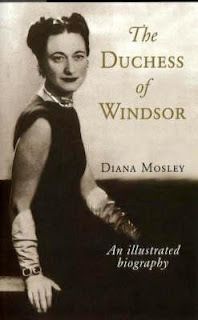
Writing came naturally to Diana Mitford Mosley, whose formidable intellect and extraordinary life resulted in a ream of published volumes: book reviews, memoirs, essays, diaries - even her letters to various friends and relatives had such readability and were of such historical value they were published in volume after volume.
This biography of the Duchess of Windsor, like the author's other works, makes no claim of impartiality - she wrote what she thought, through the filters of her own direct experience and famously individualised world view.
There were many more academically penned biographies of the Duchess of Windsor, but none by authors who knew her, whose personal life she had been a part of. Such is the value of this contribution to the massive Wallis Simpson canon.
I could read anything by Diana Mitford Mosley, having a natural bias for seeing her works in a positive light. The most engaging of her writings, as has been noted by various critics of this biography, are indeed to be found elsewhere.
This is perhaps not the book a Wallis Simpson novice reader might turn to for the dry history, any more than being one a novice Diana Mitford Mosley reader might initiate themselves with - it is simply an impassioned addendum to the author's countless other literary contributions and a qualified last word to Simpson's infinite detractors.
This piece has the uniqueness of being penned by a longstanding friend, a natural authority on elements of the woman more formal biographers could not capture. Others also wrote from a more negative bias, a key agenda behind this author's wish to set certain records straight about the woman beneath the unkind myths popular history has wrapped her in.
Diana Mitford Mosley was renowned for speaking her mind on contentious topics, few topics being more so than the Duchess of Windsor. Being a fan of this author and an avid historian, there was never the faintest possibility of my disliking this biography - though I can appreciate how the uninitiated Mitfordian may find it underwhelming, as may those seeking out meatier documentations of this polarising subject.
The touching intimacy of this book's penmanship, with its tributary endnotes, is what sets it apart from less biased Duchess of Windsor biographies. It was almost certainly never meant to be of as much academic value as other Simpson biographies, being pointedly more about setting certain public records straight from an insider's perspective.
All these things considered, this book's harshest critics are, in their blinkeredness, simply missing the most fundamental reasons for its existence. It being far from the first Wallis Simpson biography or first Diana Mitford Mosely piece I have read, my expectations were shaped accordingly.
I read it in one night and admired it for exactly what it is - the eloquent narrative of a loyal friend.
My review of Anna Karenina, by Leo Tolstoy
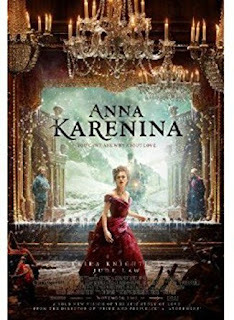
Leo Tolstoy's Anna Karenina is one of the most gorgeous rides I've had.
This is the tragic Russian tale of a married aristocratic socialite's affair with wealthy Count Vronsky. It also follows country landowner Konstantin Levin, who wants to marry Kitty, sister-in-law of Anna's brother Oblonsky. Events unfold against a backdrop of rapid change resulting from the reforms of Emperor Alexander II. Tolstoy's use of real historic events lend authenticity to the fictional events of his characters.
Impacting on these characters' lives and thoughts are such innovations as jury trials, elected local governments, railroads, banks, telegraph, increasing public awareness due to a freer press, and a class reshuffle as the ruling aristocracy becomes gradually upstaged by the emerging business class.
Accordingly, the narrative examines Russia's then feudal system, politics, religion, morality, gender and class structure. Themes include hypocrisy, jealousy, faith, fidelity, family, marriage, society, progress, carnal desire and passion, and personal connection to one's land.
At approximately a thousand pages divided into eight parts, this is narrated in third person, shifting between characters but focusing on the opposing attitudes and lifestyles of protagonists Anna and Levin. The tone alters according to character telling the story. Stepan Oblonsky's thoughts and actions are delivered in a markedly relaxed manner, while Levin's social encounters are decidedly tense (this character being sometimes thought Tolstoy's semi-autobiographical portrayal of himself). Part seven, depicting Anna's thoughts and ruminations, makes groundbreaking use of that stream-of-consciousness fluidity later adopted by greats like James Joyce, Virginia Woolf and William Faulkner.
Fyodor Dostoyevsky declared this 'flawless as a work of art'. Vladimir Nabokov concurred, admiring the 'flawless magic of Tolstoy's style'. I agree with both. I felt as if I was in the story, a bystander, a participant.
Many adaptations have eventuated, including operas, ballets and stage and radio plays, some of them jarring. A popular standout was the 1935 movie starring Greta Garbo, Fredric March, Basil Rathbone and Maureen O'Sullivan. Another was the 1977 BBC series, starring Nicola Pagett, which in ten parts successfully covered so much more than any single sitting attempt. Ardent Tolstoy fans, who often insist that no screen version has captured the genius of his writing, may be biased but correct.
Tough going at times but worth every minute. I was like a kid after Christmas when I closed the last page.



